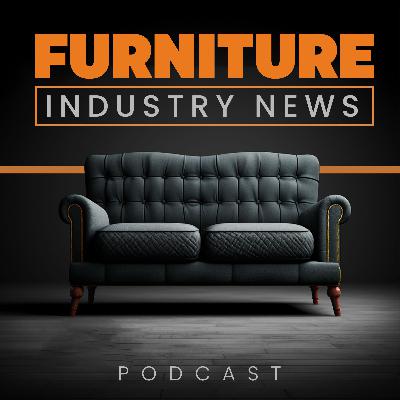Furniture Industry Under Pressure: Tariffs, Confidence, and Consolidation
Description
The pressing issue of increased tariffs on Chinese imports emerges as the focal point of our discourse today, underscoring the multifaceted challenges confronting the furniture industry. As the White House implements new Section 232 tariffs, costs for specific categories of furniture are poised to escalate to unprecedented levels, thus compounding the existing pressures of consumer confidence and economic uncertainty. This episode meticulously examines the implications of these tariffs, alongside a decline in consumer spending patterns, which has been influenced by inflation and rising interest rates. Additionally, we delve into the transformative role of artificial intelligence in online shopping, presenting both opportunities and challenges for retailers navigating this evolving landscape. Ultimately, we are reminded that resilience and adaptability are paramount for industry professionals as they grapple with an environment characterized by volatility and flux.
The furniture industry currently finds itself at a critical juncture, navigating through a labyrinth of economic pressures and regulatory changes that are redefining operational paradigms. The recent tariff announcements, particularly those affecting imports from China, herald a significant escalation in costs that could stifle profitability across numerous furniture categories. The American Home Furnishings Alliance underscores the gravity of this situation, with effective duty rates projected to surge dramatically for upholstered seating and cabinetry. This imposition of increased tariffs, couched in the rhetoric of national security, raises substantial questions regarding the sustainability of existing supply chains and the viability of price structures within the market. Furthermore, the evolving landscape of consumer confidence introduces an additional layer of complexity; as inflation and economic uncertainty loom large, consumers are increasingly circumspect in their purchasing behaviors, opting for value-driven decisions in their furniture acquisitions. Consequently, the industry must brace for a potentially turbulent holiday season, characterized by tempered demand and heightened competition for customer loyalty through innovative marketing and customer engagement strategies.
Takeaways:
- The recent increase in Section 232 tariffs has exacerbated cost pressures on imported furniture, particularly affecting upholstered seating from China, which may see effective duty rates exceeding 30%.
- Consumer confidence has markedly declined, with significant implications for furniture purchases, indicating a potential slowdown in consumer spending during the forthcoming holiday season.
- The integration of artificial intelligence in online shopping is evolving, presenting both opportunities and challenges for retailers seeking to maintain customer engagement amidst shifting shopping behaviors.
- Upcoming regulatory changes in transportation could significantly impact the logistics of furniture delivery, potentially raising costs and complicating the supply chain for smaller carriers.
- Steelcase's merger with HNI represents a pivotal moment in the office furniture sector, indicating potential for market stabilization despite ongoing tariff challenges affecting overall profitability.
- The closure of a longstanding family-owned retailer underscores the harsh realities faced by businesses in the furniture industry, emphasizing the importance of resilience and adaptability in a rapidly changing market.





